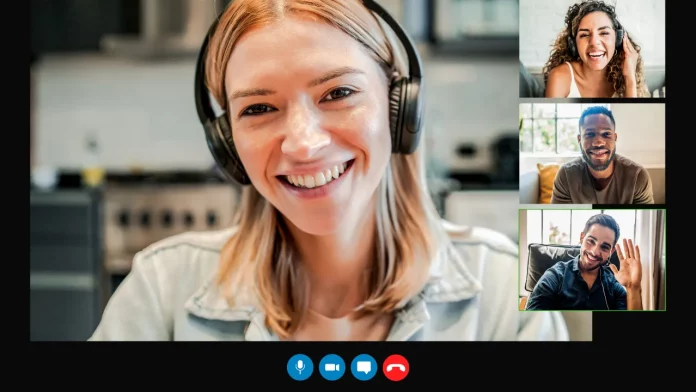With remote working being here to stay, being able to deliver a remote sales presentation effectively looks likely to be a great skill to have moving forward.
So, now is the perfect time to learn how to give a better remote Presentation- not so much from a slide’s perspective but from a delivery perspective. Here’s what you need to know.
Before the presentation
Running a remote presentation involves very different preparation than a face to face meeting. Once the presentation is booked, there are a few things you need to focus on.
Create a powerful sales deck: In person, you might have a bigger screen to work with, or a projector. So keep in mind you’ll be presenting through a smaller screen remotely. Your slides will only be as big as the screen your prospect is using. Avoid clutter by keeping text and images straightforward. Less is more in this instance. Don’t put too much information on each slide. A great sales deck grabs attention and highlights the key points you want to make, so ensure your sales deck is full of facts and supporting visuals.
Make it clear it’s a video call: One of the biggest benefits of a face to face presentation is the ability to build better relationships and use body language to convey messaging. Therefore, if delivering the presentation remotely, make sure your prospects know it will be a video call. Being on camera massively improves the chances of success and future engagement. Being able to see the prospect means you can pick up on facial expressions and non-verbal cues, so you can adjust your pitch accordingly. To be clear and transparent, add that it is a video call in the calendar invite. And if they join with no video, just ask them.
Practice makes perfect: Before you do the presentation, make sure your technology is working, and you aren’t going to have screen sharing issues. Get used to the tools you use beforehand, so you don’t waste time or look embarrassing on the call. Especially if it’s your first remote sales presentation, do a dry run with a colleague.
Minimise distractions: It’s already more difficult having to get your prospects to focus their attention on your screen, so make sure your own distractions are under control. Set your camera up, so your face is clearly displayed, have a neat and tidy background, turn off your computer notifications and set yourself to ‘do not disturb’ so no unwanted pop-ups or messages appear. Additionally, close all applications and windows you aren’t using during the call.
Beginning the presentation
Now it’s begun, it’s time to engage with your prospect immediately and get their attention.
Ensure everyone required is on the call and engaged: Don’t just jump straight in. Make sure every relevant person has joined the call and build rapport by trying to connect on a personal level. Establishing a connection before you begin the presentation ensures you’ve got their attention.
Add an upfront contract: Before you start going through the slides, make sure you are clear with your upfront contract – an agreement ahead of time about what is going to happen during the meeting. You don’t want the purpose of the meeting to be unclear before you begin.
Ask the right questions at the right time: A remote sales presentation shouldn’t be a one-way conversation. You’ve probably got a few slides that you think are really great, such as customer testimonials or positive reviews, but capture attention with relevant questions such as, ‘how does this challenge you see on the screen resonate with you?’. Asking the right questions helps you paint a better picture of their needs, as well as confirms attention and engagement throughout. Open-ended questions that get the prospect talking works best. If you feel like attention is slipping, aim to re-engage, don’t just continue ploughing through the slides.
Finishing your presentation
Now it’s time to end strongly.
Summarise the main takeaways: What do you want your prospect to leave the meeting with? Think of your strongest three points and summarise them at the end.
Start the virtual close: If the presentation has gone well, and they are showing interest, start the process to close the deal. Find out what needs to happen for the deal to close, who the decision-makers are, and get a clear indication for next steps.
Set out the next steps: Now you know what needs to happen for the prospect to become a customer, be specific with the next steps. Particularly when it comes to a follow-up timeline, don’t be vague. That way, everyone leaves the remote call with a clear indication of what is expected from them.
Get these steps right to deliver a great remote presentation, and you’ll be well set in this current climate.




